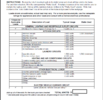You are not running everything at 240 volts in the USA. The only thing in my panel that runs at 240 volts and utilizes both hot wires now are the EV charger and my central AC condenser unit (20A breaker) neither of which are ever pulling large current at the same time. Regular plugs are only using 120 volts which means the circuit breakers are tapping only 1 side of the hot wires in alternating fashion in the panel. If you look at your own electrical panel you will have way more circuit breakers than theoretically the electrical panel capacity.Don't understand.....100 amp 240 volt service is only 24,000 watts. 100 x 240 = 24,000.
The city permit process must be accounting for extra circuits that you can have in your panel since no circuit breaker will be maxed out at all times. Also I was looking at the back of my stove, AC condenser, microwave, sink erator, etc spec books for trying to provide accurate measures of how much current is being used. Its not an exact science but I had to fill out this electrical usage worksheet to see it if met the requirements as part of the process.
At the end of the day, it was fine for the permit process and with the way I charge with off peak charging due to lower rates, there is never a temptation to charge during the day which could conflict with my charging but not likely. I also use the mobile connector as my charging unit so its not even drawing the full 40A that is is allowed but only 32A max and during off peak hours where most of your house is running on minimum current.
Last edited:



